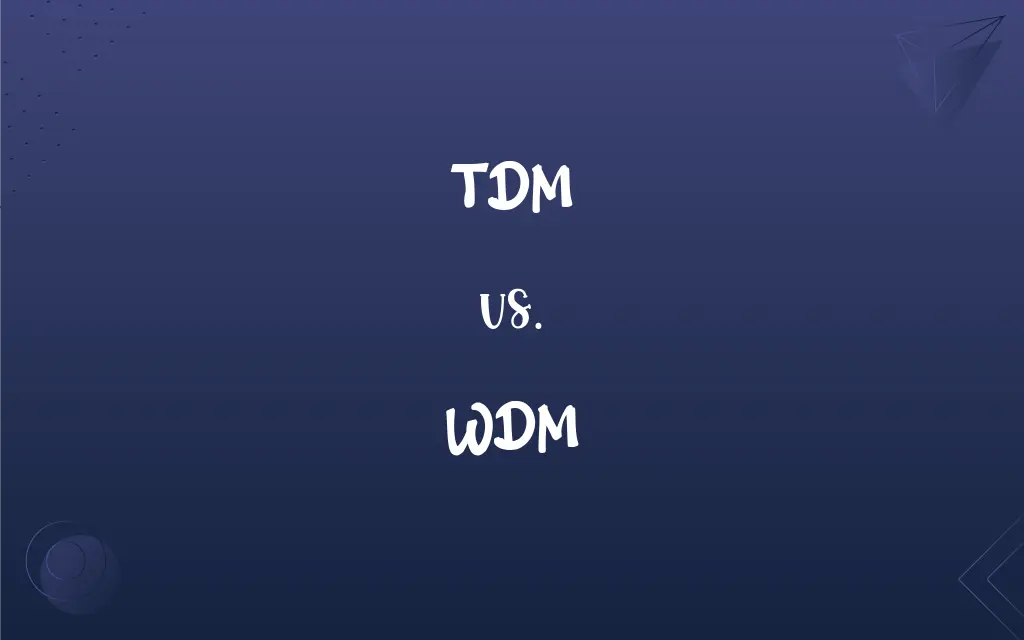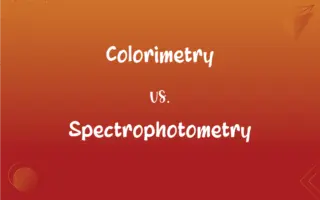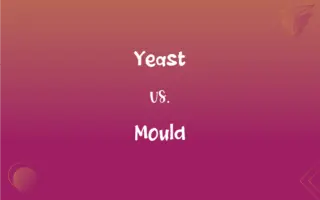TDM vs. WDM: What's the Difference?
Edited by Aimie Carlson || By Janet White || Published on February 11, 2024
TDM (Time Division Multiplexing) allocates different time slots for multiple signals over a single channel, while WDM (Wavelength Division Multiplexing) uses various wavelengths (colors) of light on a single fiber.

Key Differences
TDM works by dividing a single communication channel into multiple time slots, each allocated to a different signal. In contrast, WDM combines multiple light wavelengths, each carrying a separate data stream, on a single optical fiber.
In TDM systems, multiple data streams share the same channel sequentially over time, reducing the bandwidth for each user. WDM, however, increases the total capacity by transmitting data streams simultaneously at different wavelengths.
TDM is often used in digital telecommunication systems and can be less expensive, but it's limited by the total channel bandwidth. WDM is more prevalent in high-capacity fiber optic networks, offering higher data transmission rates.
The effectiveness of TDM depends on the synchronization of time slots, which can lead to inefficiency in case of variable data rates. WDM provides a more efficient use of the fiber bandwidth, accommodating varying data rates and multiple users.
TDM is suitable for lower bandwidth applications and simpler infrastructure, while WDM is geared towards high-bandwidth, long-distance, and scalable optical networks.
ADVERTISEMENT
Comparison Chart
Multiplexing Method
Allocates different time slots on a single channel.
Uses multiple light wavelengths on a single fiber.
Bandwidth Utilization
Limited by the total channel bandwidth.
Increases total capacity with simultaneous transmission.
Common Applications
Digital telecommunication systems.
High-capacity fiber optic networks.
Suitability
Lower bandwidth, simpler infrastructure.
High-bandwidth, scalable optical networks.
Efficiency in Data Rates
Less efficient with variable data rates.
Accommodates varying data rates efficiently.
ADVERTISEMENT
TDM and WDM Definitions
TDM
It's less suitable for high-speed data requirements due to its time-sharing nature.
We switched from TDM to a more advanced system due to increasing data transmission needs.
WDM
WDM is a technique that transmits data streams over a single fiber using different wavelengths.
Our high-speed internet backbone utilizes WDM to provide fast data services.
TDM
It sequentially transmits data streams to maximize the use of available bandwidth.
TDM allowed simultaneous data and voice transmission over our network infrastructure.
WDM
WDM is ideal for applications requiring high bandwidth and long-distance transmission.
The cross-country network upgrade involved implementing WDM for its high-bandwidth efficiency.
TDM
TDM is effective in environments where bandwidth is limited but manageable.
TDM is deployed in our satellite communication to efficiently use the narrow bandwidth.
WDM
WDM is adaptable to varying data rates and multiple users, offering scalability.
With WDM, our network easily scaled up to accommodate increasing numbers of users.
TDM
TDM requires synchronization of time slots for effective communication.
Accurate time slot synchronization in our TDM setup ensures smooth data transmission.
WDM
It supports simultaneous transmission, making it highly efficient for modern networks.
WDM technology enabled us to handle growing data traffic without additional physical channels.
TDM
TDM is a multiplexing method where multiple signals share the same channel in different time slots.
Our office’s phone system uses TDM to handle multiple calls on a single line.
WDM
It significantly increases the capacity of fiber optics by multiplexing multiple light signals.
WDM expanded the capacity of our existing fiber infrastructure without laying new cables.
FAQs
What is TDM?
TDM is a method of transmitting multiple signals over a single communication channel by dividing the signal into different time slots.
How does TDM work?
TDM works by allocating a specific time interval (slot) to each signal in a repeating pattern.
What are the advantages of TDM?
TDM efficiently uses bandwidth, is simple to implement, and offers flexibility in allocating resources.
Can TDM be used for both data and voice transmission?
Yes, TDM is suitable for transmitting both data and voice signals.
What is Dense WDM (DWDM)?
DWDM is a version of WDM that uses closely spaced wavelengths, allowing for a higher number of channels.
What are the types of TDM?
The two main types are Synchronous TDM and Asynchronous TDM (also known as Statistical TDM).
What is Synchronous TDM?
In Synchronous TDM, time slots are preassigned to sources regardless of whether they have data to transmit.
What is Asynchronous TDM?
Asynchronous TDM dynamically assigns time slots based on demand and reduces idle times.
What are the limitations of TDM?
TDM can lead to inefficiency if some channels have no data to send but still occupy time slots.
What is WDM?
WDM is a method used in fiber optics that combines multiple signals on a single fiber by using different wavelengths (colors) of laser light.
What are the types of WDM?
The main types are Dense WDM (DWDM) and Coarse WDM (CWDM).
What are the limitations of WDM?
WDM can be expensive due to the cost of laser technology and requires precise tuning of wavelengths.
Is TDM used in digital or analog systems?
TDM is primarily used in digital systems.
How does WDM compare to TDM?
WDM increases capacity by using different wavelengths, while TDM increases capacity by allocating time slots. WDM is typically used in fiber optics, while TDM is more versatile.
What is Coarse WDM (CWDM)?
CWDM uses more widely spaced wavelengths, which is less expensive but supports fewer channels than DWDM.
What are the advantages of WDM?
WDM increases bandwidth without additional cable, is highly efficient, and supports high data rates.
Can WDM be used for both data and voice transmission?
Yes, WDM is capable of transmitting both data and voice signals over fiber optic cables.
Is TDM used in wireless communications?
Yes, TDM is used in various wireless communication systems.
How does WDM work?
WDM works by using different wavelengths of light for each signal, allowing multiple signals to be transmitted simultaneously over the same fiber.
Is WDM only used in fiber optics?
Yes, WDM is specifically designed for use in fiber optic communications.
About Author
Written by
Janet WhiteJanet White has been an esteemed writer and blogger for Difference Wiki. Holding a Master's degree in Science and Medical Journalism from the prestigious Boston University, she has consistently demonstrated her expertise and passion for her field. When she's not immersed in her work, Janet relishes her time exercising, delving into a good book, and cherishing moments with friends and family.
Edited by
Aimie CarlsonAimie Carlson, holding a master's degree in English literature, is a fervent English language enthusiast. She lends her writing talents to Difference Wiki, a prominent website that specializes in comparisons, offering readers insightful analyses that both captivate and inform.







































































